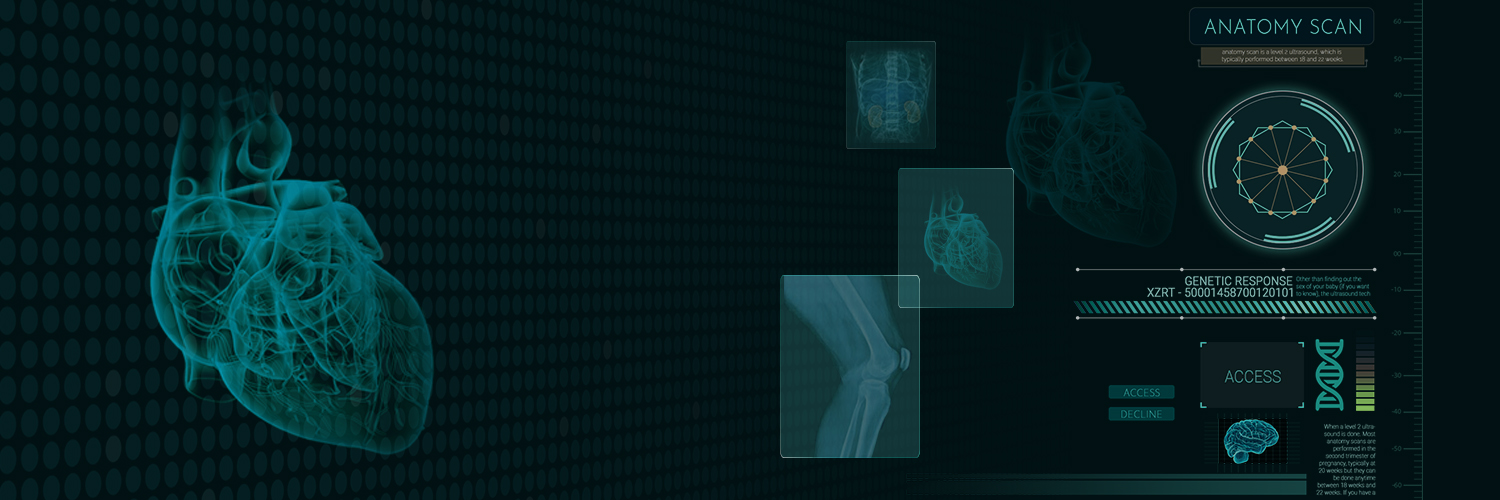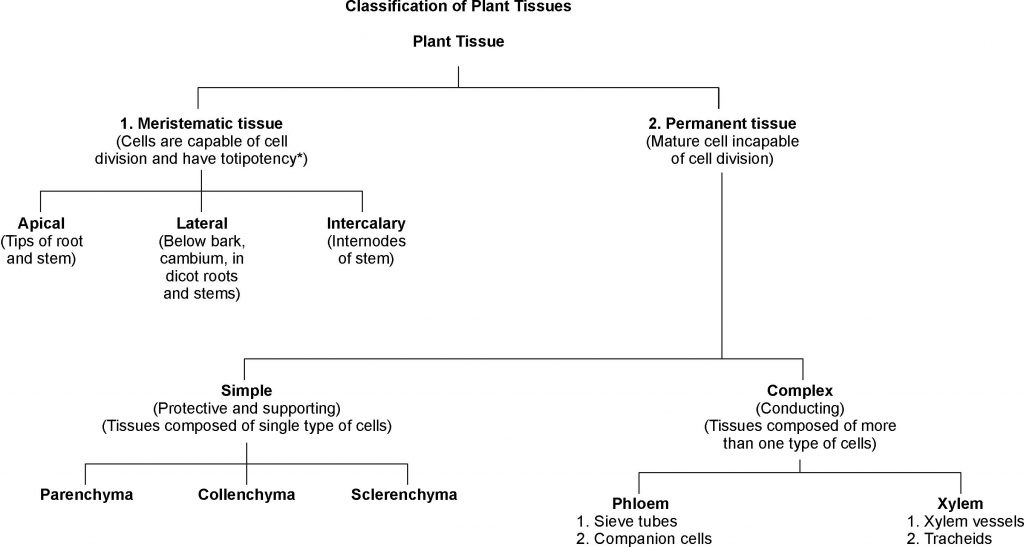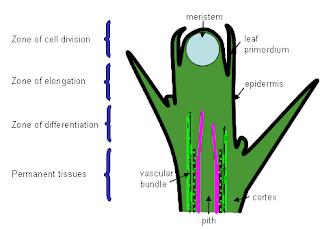

STRUCTURE:
FUNCTION:
OCCURRENCE:
Apical meristems:
Lateral meristems:
Intercalary meristems:
Occurrence: They are located at the base of leaves or internode. e.g. stems of grasses and other monocots.
Function: They produce an increase in the length of an organ such as leaves and internodes.
Permanent Tissues:

Permanent tissues can be of two forms:
Difference between merismatic tissue and permanent tissue:
| Meristematic tissue | Permanent tissue |
| Its component cells are small, spherical or polygonal and un-differentiated. | Its component cells are large, differentiated with different shapes. |
| Cytoplasm is dense. Vacuoles are nearly absent. | Large central vacuole occurs in living permanent cells. |
| Intercellular spaces are absent. | Intercellular spaces are often present. |
| Cell wall of its cell is thin and elastic. | Cell wall of its cells is thin or thick. |
| Nucleus of each cell of this tissue is large and prominent. | Nucleus of each cell of this tissue is less conspicuous. |
| Its cells grow and divide regularly. | Its cells do not normally divide. |
| It is a simple tissue. | It can be simple, complex or specialized. |
| Its cells are metabolically active. | Metabolic rate of cells of this tissue is slow. |
| Cell organelles of its cells are simple. | Cell organelles of its cells are well developed. |
| Cells of this tissue do not contain crystals and other inclusions. | Cells of this tissue possess crystals and other inclusions. |
| Its cells are living. | Its cells may be living or dead. |
| It provides growth to the plant. | It provides protection, support, conduction photosynthesis, storage, etc. |